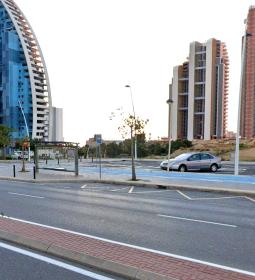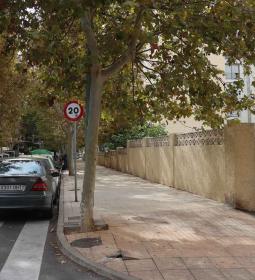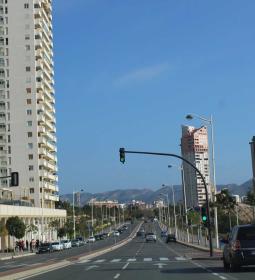The actions, which ensure the continuity of the service and minimize the possibility of spills, have already begun with the replacement of two large sludge storage hoppers
Benidorm invests one million euros in improvements in the WWTP to promote the circular economy and environmental protection

Benidorm City Council will invest 1,002,606.11 euros throughout this year in improvement actions at the Wastewater Treatment Plant (WWTP) to promote the circular economy and protect the environment. This is a series of actions aimed at guaranteeing the continuity of the service and minimizing the possibility of spills because of the obsolescence of the infrastructure.
The first of these improvements has already begun and to check its state of execution, the Water Cycle Councilor, José Ramón González de Zárate, has visited the WWTP, also on the occasion of the celebration of World Water Day, next Friday, and within the events organized for this anniversary.
This improvement consists of replacing the oldest mechanical dehydration equipment, which dates back to 1997. They are centrifugal decanters that discharge the sludge into a 30-square-meter hopper and no longer provide the necessary dryness of the sludge that must be sent for thermal drying. In addition, they have a very high energy consumption compared to new-generation equipment.
As for the dehydrated sludge storage hoppers, these are being replaced by one with greater capacity since the older dehydration equipment will be unified into one. This action that is being carried out represents an approximate investment of 150,000 euros, as specified by the Water Cycle councillor.
The obsolescence of the first generation dehydration equipment is forcing it to operate continuously with the second generation, without the possibility of alternating them and only relying on the oldest machines in the summer, as support and in exceptional cases. That is why it has been decided to replace the older centrifuge systems with a new generation one.
It is a screw dehydrator that will cover the capacity of the two current first-generation centrifuges. Thus, a 2+1 configuration would be available. In winter it would operate with one machine intermittently and in summer continuously and the other intermittently and a third as an active reserve.
This investment is part of Improvement Number 10 of the operation and maintenance service of the WWTP's sanitation and purification system, which includes other actions such as the change of the 20-year-old gasometer that shows some deterioration.
González de Zárate highlighted that “one million euros of investment focused on the circular economy and the environment has been approved” and has stressed the importance of “keeping the treatment plant, which dates back to the 1980s, updated.” He recalled that the hoppers that have been replaced "are more than 45 years old and must be changed to improve the reuse of sludge and, therefore, protect the environment."
The investment will be divided into two parts. On the one hand, the improvement of sludge originated from purification "which is used in processes such as cement, composting or fertilizer for public gardens and ecological orchards." At this point, the mayor specified that the hoppers "no longer provided the necessary performance and that is why we are updating them."
The other part has to do with the use of the biogas that is generated in the purification process. To improve it, the current 1,150 cubic meter gasometer in which the biogas generated from the sludge is stored will be changed. “It also no longer gives the performance we expect,” said González de Zárate. The biogas generated is used in the WWTP vehicles, those of the City Council and to reduce the plant's energy expenditure. “In 2024, we want 100% of the energy spent in the WWTP to be produced by the treatment plant and to achieve high-quality sludge so that it can be reused in its entirety and with all guarantees,” the councillor concluded.
The projected investments also contemplate, among other actions, the adaptation and renewal of equipment at Sierra Helada EBAR, the regulation of cogeneration anti-dumping and the installation of a fire and methane leak detection system.








